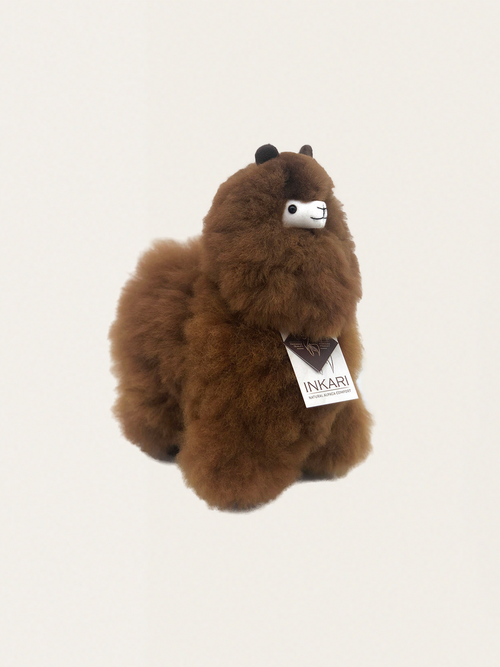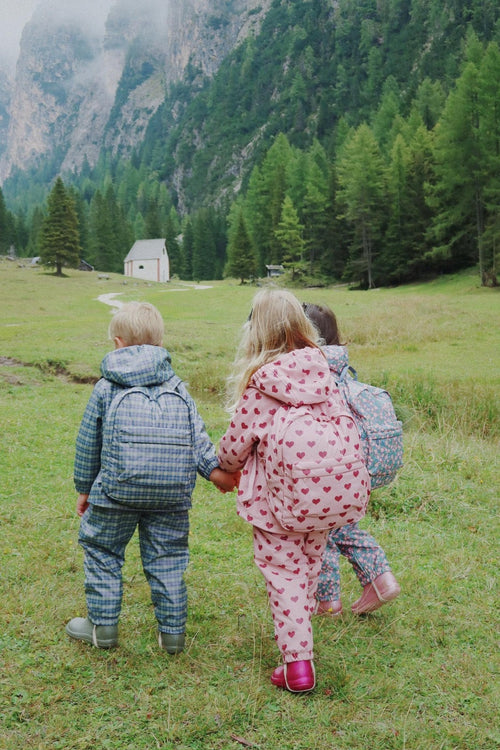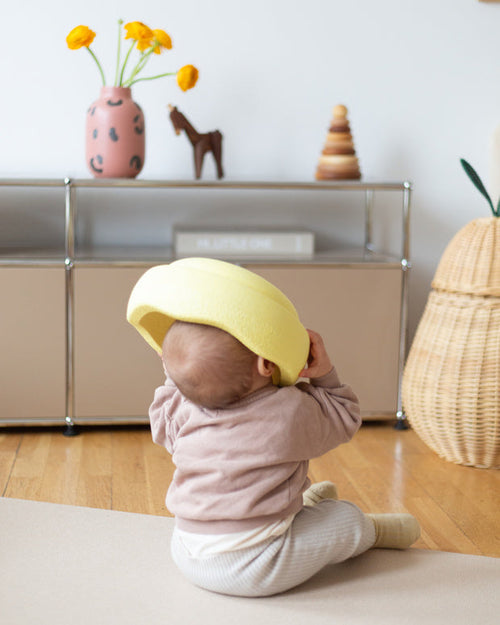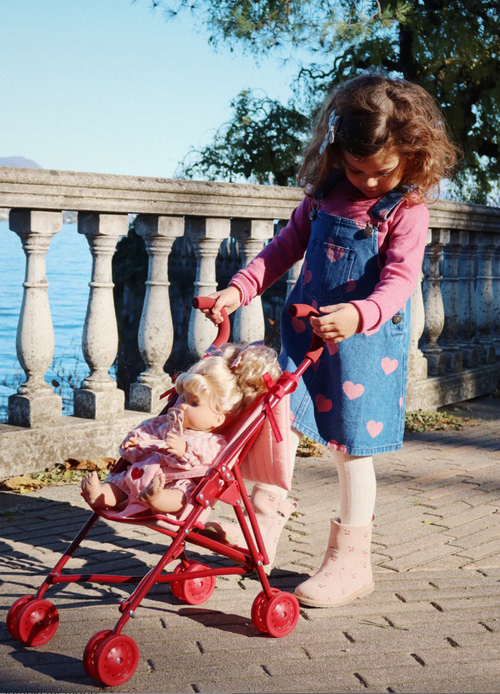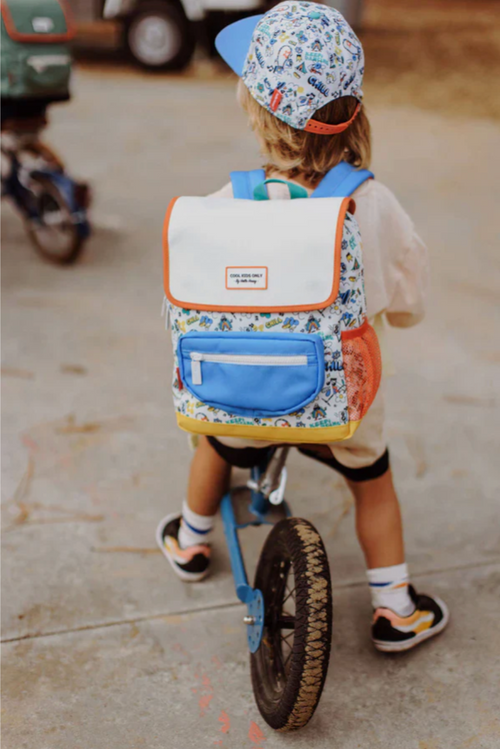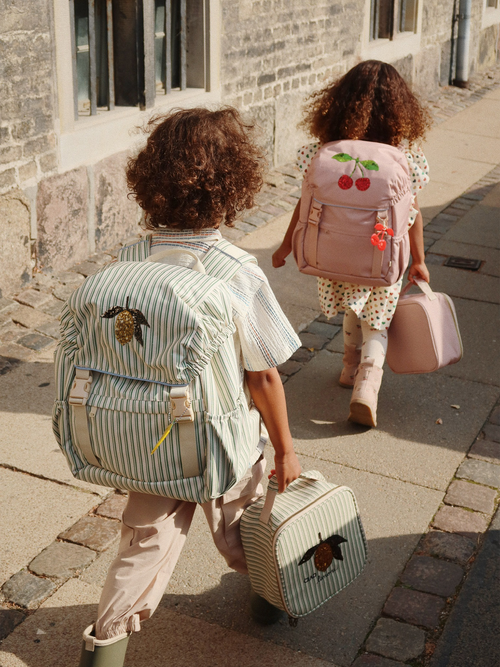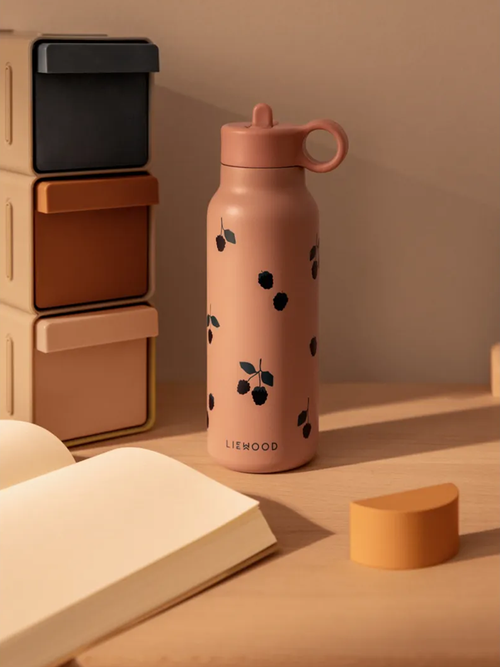"Is my child too cold? Or maybe too hot?" This is a question every parent probably asks themselves in the middle of the night. Small children can't yet regulate their body temperature as effectively as adults. They won't tell us something's wrong, nor will they throw off the covers when they get too warm. Therefore, ensuring their thermal comfort is one of our most important tasks – the key to restful sleep and, more importantly, to their safety.
Proper nightwear is more than just a cute pair of pajamas. It's thoughtful protection that prevents both hypothermia and, more dangerously for little ones, overheating. So how do you navigate the maze of advice and create the perfect outfit for any weather?
In this guide, we'll walk you through everything you need to know. We'll explain in simple terms how to match your clothing to the bedroom temperature and what to look for when choosing fabrics to ensure a peaceful and safe night for your child (and you!)
Let's start with the basics: the ideal bedroom temperature
Many of us have a natural tendency to overheat our homes , believing that the warmer the environment, the better for our little ones. However, experts agree: the optimal temperature for a child's sleep is cooler than you might think, 18-22°C . In such an environment , the risk of dangerous overheating is minimal , and the baby's body doesn't have to waste energy cooling itself, which promotes deeper and more restorative sleep .
Of course, we also don't want our little one to get cold – temperatures below 17°C can cause discomfort. However, the key isn't to heat the room at all costs or layer on layers of clothing, but rather to choose a sleeping bag with the right thickness , which we'll discuss in a moment.
Our tip: To ensure the ideal room conditions, hang a simple thermometer on the wall . This small device will give you priceless peace of mind and the assurance that you're providing your child with the best possible environment for rest. Also, remember to briefly, thoroughly air out your bedroom before bed – fresh air is a true ally for restful nights.
How to translate temperature into clothing? A practical cheat sheet.
Once we know the room temperature, we face a key question: what does this actually mean for us in practice? To eliminate guesswork and provide parents with certainty, the universal TOG scale was created. This measure determines how warm a given sleeping bag or wrap is. The rule is simple: the higher the TOG number, the better the thermal insulation and the warmer the sleeping bag.
The table below is a simple guide to help you choose your baby's outfit for the temperature in their bedroom. Remember, however, that these are guidelines only – it's always worth checking to make sure your baby's neck is dry and comfortably warm, not sweaty or cold.
| Room temperature | Recommended outfit to wear under the sleeping bag | Recommended sleeping bag (TOG scale) |
| Above 24°C (very warm) | Short-sleeved bodysuit only or diaper only | None, optional muslin wrap (0.2 TOG) |
| 22–23°C (warm) | Short-sleeved bodysuit | Lightweight sleeping bag 0.5 TOG |
| 18–21°C (optimal) | Long-sleeved bodysuit or romper | All-season sleeping bag 1.0 - 1.5 TOG |
| Below 18°C (cool) | Long-sleeved bodysuit + romper | Winter sleeping bag 2.5 TOG |
Important Note: For safety reasons and to minimize the risk of SIDS, we do not recommend using loose blankets, quilts, or pillows in the crib for infants. A safe, well-fitting sleeping bag is the best alternative.
Sleeping bag – a guarantee of warmth and safety in one
Standing over the crib at night and seeing that your little one has kicked the covers off again? It's a dilemma every parent knows. A sleeping bag is a simple and ingenious solution to this problem. It acts like a sleepsuit that stays in place all night long. Here are three key reasons why experts and experienced parents consider it the best choice:
- Safety first. This is the most important advantage of a sleeping bag. It eliminates the risk of the material accidentally sliding over the baby's face and airway, which is a key recommendation in preventing Sudden Infant Death Syndrome (SIDS). The baby is swaddled, but their head always remains exposed.
- Consistent thermal comfort. No more nighttime wakings due to your little one being too cold. A properly selected sleeping bag (with the appropriate TOG) ensures your child maintains a constant, optimal temperature throughout the night, resulting in more restful and deeper sleep.
- Freedom of movement and developmental support. Modern sleeping bags have a specially designed, wider cut at the bottom. This allows the baby to kick their legs freely and allows them to assume a natural, healthy "frog" position for hip joint development.
When choosing the perfect model, pay attention not only to its thickness (TOG) but also to the quality of the material. Look for natural, breathable, and certified fabrics, such as organic cotton or bamboo , which are gentle on baby's skin and support proper thermoregulation.
"One layer more" – how to apply this rule wisely?
This is common advice that works great during the day, but it can be misleading when it comes to sleep. If you're using a sleeping bag with the right TOG (Total Gauge), remember that it's already an "extra layer." Putting too much clothing under it is a surefire recipe for overheating.
Instead of sticking to this rule, rely on the best indicator – the nape test . If your baby's skin feels dry and pleasantly warm there, the outfit is perfect. If it's hot or damp, it's a sign of too many layers. Conscious observation, not a rigid rule, is the key to your baby's comfort.
The Neck Test – Your Reliable Way to Assess Your Baby's Comfort
Cold hands and feet are one of the most common causes of concern for parents, and also one of the most misleading signs. A baby's circulation isn't fully developed yet, so their limbs often feel cooler, but that doesn't necessarily mean they're cold.
Instead of touching your hands, use the simplest and most reliable method for assessing thermal comfort – the nape test. The skin in this area (or on the upper back, between the shoulder blades) perfectly reflects actual body temperature.
How to interpret what you feel under your fingers?
- A warm and dry neck: Perfect! The clothing is perfect and the baby fits perfectly.
- Hot or sweaty neck: Baby is too warm. Remove a layer or switch to a lighter sleeping bag.
- A noticeably cold neck: Your little one may be too cold. Consider adding a layer (e.g., a onesie under a romper) or using a sleep sack with a higher TOG rating.
This simple reflex will quickly become second nature. It will give you the peace of mind and confidence that you know exactly what your baby needs without having to guess.
Material Matters: How to Read Sleepwear Labels
A baby's skin is up to five times thinner than an adult's . This not only makes it incredibly delicate but also more absorbent and susceptible to irritation or allergic reactions. Therefore, what comes into direct contact with it throughout the night is so crucial. When choosing sleepwear, it's worth becoming a conscious detective who carefully reads labels.
Synthetic fabrics like polyester may look cute, but they don't allow skin to breathe. They trap moisture, leading to overheating, sweating, and discomfort that can wake your little one. Natural fibers act like intelligent air conditioning—they help maintain optimal temperature and wick away sweat.
What fabrics and certificates are worth paying attention to?
- Organic cotton: This is a classic and a reliable choice. It's soft, durable, and breathable. Look for cotton with the GOTS (Global Organic Textile Standard) certification, which guarantees that no harmful pesticides or chemicals were used at any stage of production.
- Bamboo viscose: Exceptionally soft and silky to the touch, often compared to cashmere. It has excellent thermoregulatory properties (cooling in summer, warming in winter) and antibacterial properties, making it an ideal choice for children with allergies.
- Merino wool: A true thermoregulator, it's perfect for year-round use. It wicks moisture away much better than cotton, keeping skin dry even when lightly sweating. Don't worry about it being itchy – merino wool is flexible and incredibly gentle on baby's skin.
When looking for clothes, also look for the OEKO-TEX Standard 100 mark. This is your assurance that the final product is 100% free of harmful substances and completely safe for your child.
Products from Kokosek.pl that support your child's peaceful sleep
At Kokosek.pl, you'll find carefully selected products that help create a safe and soothing environment for your child to fall asleep. These solutions support healthy sleep and meet the needs of conscious, modern parents.
The stylish and functional Sebra crib grows with your child —from birth to approximately 6-7 years of age. Designed in Denmark to flexibly adapt to your baby's changing needs.
Crib development stages:
- Stage 1 – raised base for infants; comfortable positioning of the baby.
- Stage 2 – lowering the bottom, preventing falling out for crawling babies.
- Stage 3 – removing one or both side bars to facilitate independent standing.
- Stage 4 – extending the frame and lengthening it to approximately 152–157 cm, transforming it into a junior bed.
It's worth noting that the materials are of the highest quality—birch or beech wood, coated with non-toxic, antibacterial paint. Two types of Sebra mattresses are also available: Classic II (cooled foam) and Harmony (Pantera® FOAM), both of which are OEKO-TEX® certified and easy to keep clean.
Humming bears and Moonie bunnies – emit gentle sounds of white and pink noise, soothing heartbeats, and nature sounds that help babies fall asleep faster and sleep more soundly.
Cloudbox Projector – a modern device combining the functions of a night light, a star projector, and a player of soothing melodies that create a magical atmosphere in a child’s room.
The Baby Dream Machine is an innovative 3-in-1 device – a night light, humidifier and white noise generator – that creates the perfect environment for a baby to sleep peacefully, combining soothing light, optimal humidity and relaxing sounds.
The Drift Away Ergopouch sleep aid is a portable device with a white noise function and a soft night light that helps your baby fall asleep faster and ensures peaceful, uninterrupted sleep at home and on the go.
Summary – how to dress a child for sleep so that he or she sleeps peacefully?
Dressing your baby for bed doesn't have to be complicated if you follow a few simple rules : keep the room at an optimal temperature of 18-22°C , choose natural materials , avoid overheating, and use safe solutions like baby sleeping bags instead of loose blankets. Always check your baby's neck to ensure their temperature is normal, and adjust the number of layers according to the season and bedroom conditions.
Thanks to appropriate clothing, your little one sleeps more peacefully, and you can be sure that you are providing them with a safe and comfortable environment.








